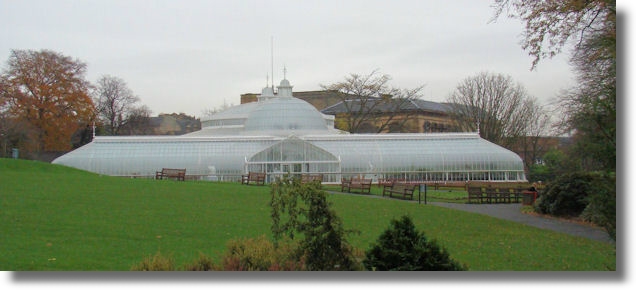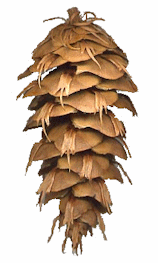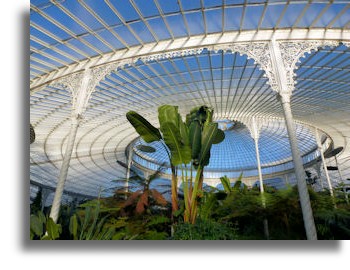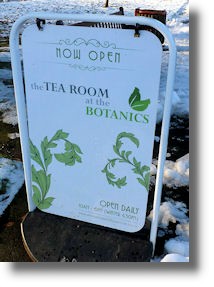
Places to Visit in Scotland
- Kelvinside Botanic Gardens, Glasgow

The History of the Gardens
In the 19th century the industrial revolution was creating a great deal of wealth for Glasgow (or, at least, for a number of its entrepreneurial citizens) and there was an explosion of "good works" with the creation of many of the city's open spaces and parks and the construction of some of the ornate buildings that still survive to this day.
The Botanic Gardens were founded in 1817 by a distinguished botanist, Thomas Hopkirk (pictured on the left). The University and a number of local dignitaries contributed to the project and the original gardens were created at the western end of Sauchiehall Street (at that time at the edge of the built-up area of the city). The gardens proved to be so popular that a new site further west on the banks of the river Kelvin was obtained to provide space for the ever expanding collections. The new gardens opened in 1842, although access was restricted to members of the Royal Botanic Institution of Glasgow, the owners. However, the general public were admitted at weekends (after paying a small entrance fee).
An eminent and famous botanist, William Jackson Hooker, became Regius Chair of Botany at the nearby University of Glasgow in 1821 and the Botanic Gardens flourished during the 20 years he was in charge (he left to become curator of the Royal Botanic Gardens, Kew).

Another famous botanist, David Douglas, from Scone near Perth, obtained a post at the Glasgow Botanic Gardens in 1820. Douglas (pictured on the right) undertook many expeditions to collect plants and seeds and bring them back to the UK, including, of course, the Douglas Fir. His plant-hunting expedition in the Pacific Northwest in 1824 ranks among the great botanical explorations of a generation that excelled in such exploits. See Famous Scots - David Douglas for more on this remarkable man who was the first to bring back to Europe over 200 species of plants, including lupins, phlox, penstemmon, sunflowers, clarkia, Californian poppy, mimulus, flowering currant, rose of sharon (hypericum), gaillardia and mahonia. The illustration of a pine cone on the left is of a Douglas Fir (the tree's scientific name, Pseudotsuga menziesii, honours a rival botanist).
In 1878 a teak glasshouse was erected (now called the Main Range)and in 1891 the Corporation of the City of Glasgow took control of the Gardens and the Glasgow City Council is still responsible for the planning and maintenance of one of the most popular parks in the city.
Kibble Palace
John Kibble was a wealthy merchant who built a large, botanical glasshouse for his mansion beside Loch Long. He later donated it to the City of Glasgow and it was moved to the Botanic Gardens at Kelvinside in the west end of the city at Kibble's own expense in 1873. It has been an enduring attraction ever since.Named after the benefactor, the "Kibble Palace" with its impressive iron work and glass has become a popular attraction for both locals and tourists, with over 400,000 visitors enjoying the plants growing there. The building also houses a collection of sculptures.

In 2006 the iron and glass building was dismantled in a £7 million refurbishment which lasted for two years. The ornate iron ribs of the huge Victorian glasshouse were painstakingly taken apart, cleaned, repainted and replaced and new glass windows inserted. Inside, there was a transformation, though many of the original ferns and other plants have been returned. Some, such as the Australasian tree ferns have been growing there for 120 years and the collection is of international importance. The eight attractive marble sculptures have also been cleaned and brought back to grace the building. A new internal lighting system has been installed. To avoid unsightly cables, the lights shine from ground level and bounce off reflective circular mirrors in the roof.
Other Conservatories
There are another eleven main conservatories open to the public. These are teak framed and they are also undergoing a long-term refurbishment programme. The west wing, for example, has a plaque unveiled in 2005 by Prince Charles, Duke of Rothesay, in honour of Queen Elizabeth the Queen Mother, who had died three years earlier at the age of 101.
The first conservatory concentrates on floral displays throughout the year while there are two glass houses dedicated to members of the orchid family and another on begonias. The palm house is tallest of these conservatories (45 feet high) and it contains plants from tropical rainforests. While most of the conservatories are warm and humid (a great place to go when the weather is cold), there are two glass houses with arid land plants demonstrating desert adaptations.
The plants in some of the conservatories have been designated national collections by the NCCPG (National Council for the Conservation of Plants and Gardens). These are the tree ferns in the Kibble Palace, the Begonias and the Dendrobium orchids.
The Main Grounds
The Gardens currently cover an area of 19.6 hectares (42.2 acres) and include an arboretum which was opened as recently as 1976. But the trees are now well established and include examples introduced by the botanist and explorer David Douglas. There is a bridge over the river Kelvin from the Botanic Gardens which goes over to the University of Glasgow grounds, offering attractive views of the river and access to the pathways within the university grounds.
There is a herb garden and the herbaceous borders provide a riot of colour in the spring and summer, after the daffodils have faded in the spring. There is a weeping ash tree on the main lawn which was planted in 1841 and has survived many winter storms. No Scottish parkland would be complete without a collection of rhododendrons and the botanic gardens are no exception.
In warm weather, the grass areas can be covered by sun worshippers who have escaped from the hustle and bustle of busy Byres Road and Great Western Road.
Tearoom

Perhaps because there were always cafes and restaurants nearby in Byres Road, for many years there were no facilities for providing food or even just tea or coffee in the park - very much a case of bring your own sandwiches and flasks and sit on the grass or the park benches. In recent years however, there has been a small facility selling tea and coffee and snacks near the main entrance and a mansion house within the grounds has been adapted to provide a more extensive menu. Nothing fancy, concentrating on soup, sandwiches, baked potato, Paninis, cream cakes and drinks. From personal experience I can vouch for the sandwiches being substantial and tasty. The current menu can be found at the Tearoom page of the Friends of Glasgow Botanic Gardens Web site.
Location and Opening Times
Kelvinside Botanic Gardens are in the West End of Glasgow, at the northern end of Byres Road where it meets Great Western Road. There are Glasgow Underground stations within walking distance at Hillhead and Kelvinbridge.The Gardens are open 7 am to dusk all year, with the glasshouses open 10am – 6pm (4.15pm in winter) with free entry to all areas of the Gardens and Glasshouses. But check the Botanic Gardens page on the City of Glasgow Web site in case of changes.
See also the Location Map on Google Maps (you can enlarge the scale of this map, if required).
Slide Show and YouTube
So as to be able to allow readers to see more of the flowers and the gardens, there is a Slide Show of over 60 pictures taken at Kelvinside Botanic Gardens and a YouTube of video clips and still photos.
Return to Index of Places to Visit
Where else would you like to go in Scotland?

